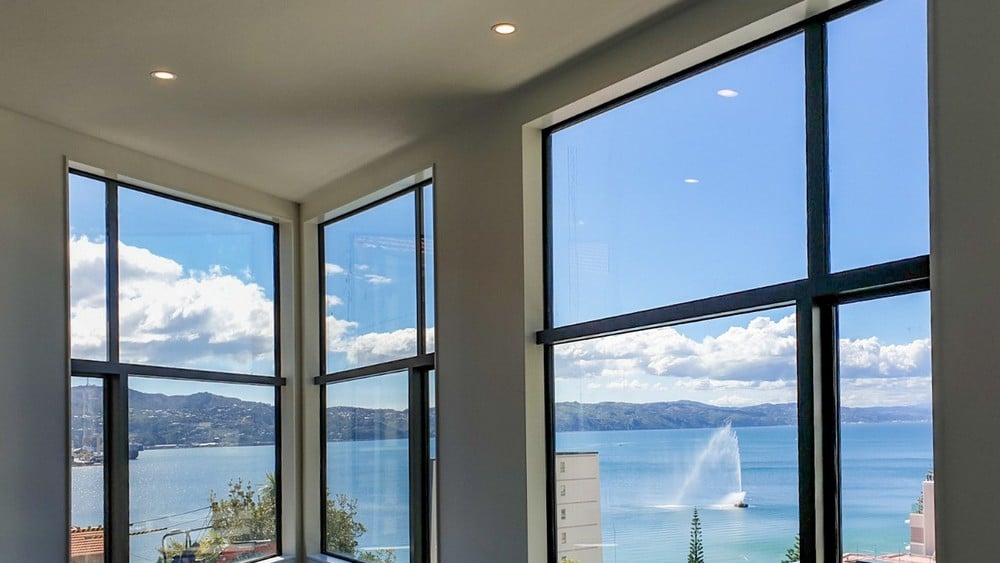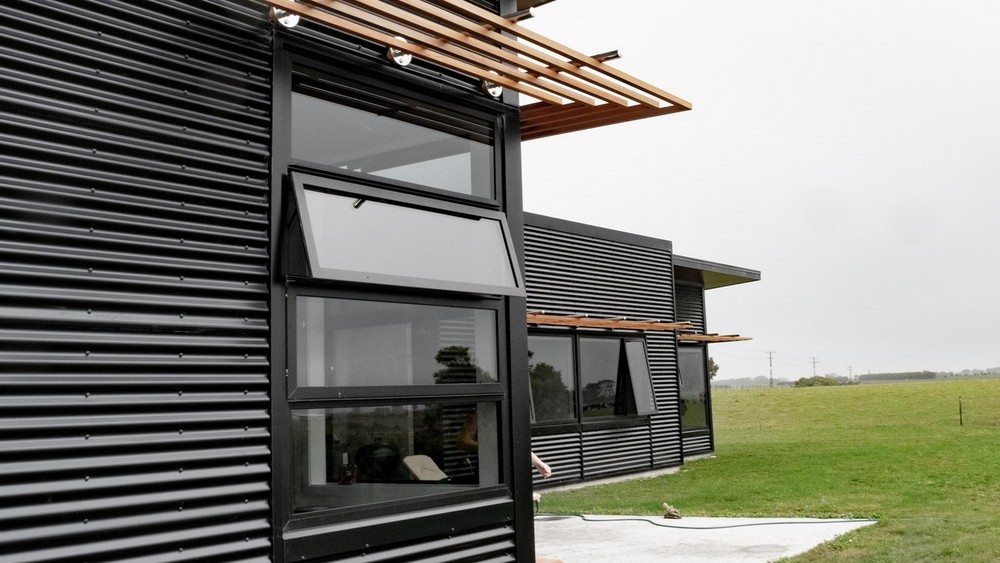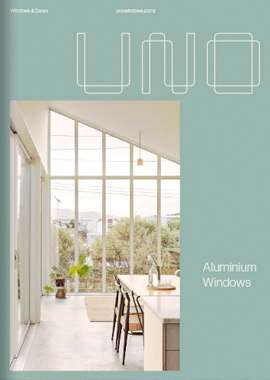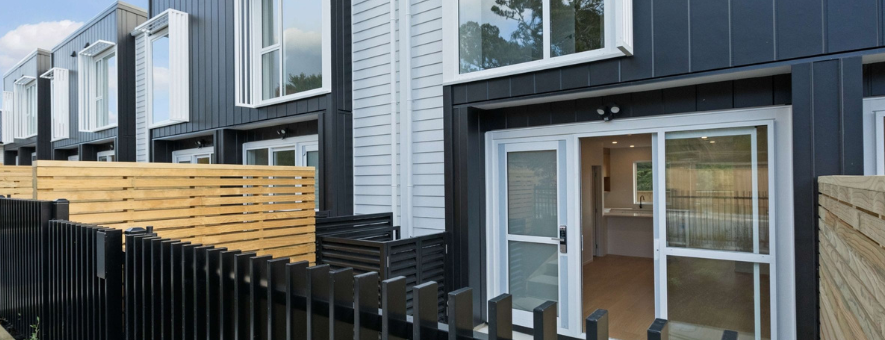When considering window options there are a few things to take into consideration to ensure you get the best possible window & door solution for your individual needs. Not only are there a wide range of materials that your windows can be made from, but also a lot of glazing types and opening styles, which can make selecting windows a little bit more involved than at first thought!
While you may have the style of window in mind or at least the colour, the material and glass type can have a huge impact on the long-term comfort and enjoyment of the people living within your new home. One of the first things you’ll need to factor into your new project is the material of the window frames you select.
For example, common window frame materials include:
- Wood
- Aluminium
- uPVC
- Steel
- Fibreglass
And while each has its own positives and negatives, there’s one that stands out for a variety of reasons: aluminium windows.
While uPVC may have been the material of choice for double-glazing salespeople in the 1980s, to the point where it became the focus of a TV series in the UK, its popularity has waned in favour of more stylish, sustainable and effective materials.
So why have aluminium windows become the popular choice for modern builds? Aluminium as a material for your window & door frames has many benefits. It’s an abundant, naturally occurring metal, but can also be recycled over and over again, making it a sustainable choice. It is low cost when compared with steel or fibreglass and requires little maintenance versus the other materials due to its corrosion & UV resistance, anti-bacterial properties, and durability. Aluminium is also available in all the configurations homeowners are familiar with, but its strength means you can enjoy larger windows and create a more open environment in your home.
So let’s explore the glazing options and a few different types of aluminium windows and their respective benefits in providing a warm, dry, healthy and stylish home.

Double and single glazed
When most people think of windows, it’s actually the glazing type they think of first. Go into an old, cold home and the single panes of glass in the windows (possibly moisture-laden) become a focus. Walk into a modern home on a cold day and the relative ease with which the heat pump warms the rooms is attributed to the double glazing and insulation.
So let’s explore the two main types of glazing a bit more.
Single glazed windows
Single glazed windows simply have a single layer of glass to separate one environment from another. Single glazing doesn’t provide effective insulation and increasing the thickness of the glass doesn't improve its insulation. Choosing the right type of glass such as a Low-E coating can slightly improve the performance. Laminated single glazing is better for sound & UV reduction.
Double glazed windows
Double glazed windows are made with two layers of glass with a sealed or insulated air space between which provides additional insulation from exterior environments when compared to single glazing. To further enhance the insulation, an inert gas such as argon or krypton can be added to the air space. The R-value of the glass indicates its insulation rating and is useful when comparing glass options.
Triple glazing is available in some areas, however, an effective double glazed unit is usually sufficient to improve insulation in the New Zealand climate. Sometimes the window location will dictate the glass types used in a home. For example, some choose to go with laminated double glazing for the road facing windows to reduce traffic noise. All exterior windows in modern houses are double glazed due to government regulations and contribute to a warmer, drier home.
Download the UNO window brochure
Types of aluminium windows
Below are several of the different types of windows frequently used in housing projects in New Zealand and their key benefits or applications.
Fixed windows
These windows do not open. They're often called picture windows as they are typically used to showcase a view or enable light to flood into otherwise dark areas.
Awning windows
These are hinged from the top and the opening part is called a sash. They are perfect for allowing airflow through your home when needed. When left open, awning windows shield the rain better than a casement window. No matter whether it’s a tall thin bathroom window, a wider bedroom window or a living room window, these windows are common in all homes/buildings.
Casement windows
Hinged to the side rather than the top these are less common but some prefer the side opening style. When the window is shut they look the same as an awning window, with just handles positioned on the side.
Bi-fold windows
These are made as two or more hinged panels that fold back to create a large opening. Bifold windows are best with an even number of panels as this makes it easier to open and close the window. Bifold windows are often used to create a seamless opening between the indoors and out, in areas such as kitchens or bars.
Sliding windows
Sliding windows have one sliding track, which enables the panels to slide behind the fixed panel. They are great for increasing air-flow or connecting indoor & outdoor living areas. As the sliding panels don't protrude past the frame they are a safe option for walkways or high traffic areas
Stacking windows
Unlike bi-folds, where the entire window or door space opens, stackers have two or three sliding panes, allowing you to open two-thirds of the window size. These are popular in situations where you don’t want the window opening to obstruct a walkway or living space.
Thermal windows
Thermal windows are available in all the opening types discussed above, but are made from a different profile to standard windows. Here we look at the main benefit of thermal windows and how they are different from standard windows.
A typical aluminium window isn’t a good insulator as it allows heat transfer from inside to out. In excess of 40% of the heat in your home can be lost through your windows during winter or vice versa in summer when you’re trying to keep your house cool. In contrast, thermal windows have a nylon insulator built into the aluminium profile which acts as an insulator, reducing the heat transfer through the window frame, keeping a more even temperature within your home.
To further enhance the energy efficiency of a thermal window, double glazing with a thermal spacer, Low E coated glass and argon fill are great options which further reduce condensation and heat transfer through the glass.
Thermally improved windows are becoming increasingly popular in New Zealand with more emphasis being put on energy efficiency and healthier homes.
Windows are one of the most important purchases you make when building a home. They’re vital to your comfort and also your health so deserve extra attention to ensure you make the right choices.
Modern house designs are moving towards larger windows and more of them. Its worth thinking about the impact of windows on the comfort of your home and ensuring that you get the best window solution to meet your unique requirements and ensure you never regret the choices you made.
To discuss your new build window needs, or to ask us to contact your builder simply use the button below and we’ll do the rest.
Contact us



